Leonardo da Vinci
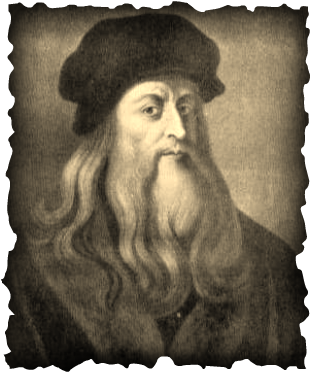
Leonardo da Vinci was born in Vinci, Italy in 1452, and died in 1519. He was an inventor, but more famous as an artist. Leonardo was arranged to become an apprentice to Andrea del Verrocchio, the famous painter. Leonardo began to paint some of his masterpieces in Florence in 1498. His two most famous paintings are: The Last Super and Mona Lisa. He also made some scientific studies including: dissections, observations of flight of birds, and research on the movement of water currents. The king of France admired him and gave him all the freedom to pursue his interests. During the last three years of his life, Leonardo lived in a small house near the king's summer palace and spent most of his time sketching and working on scientific studies.
Sandro Botticelli
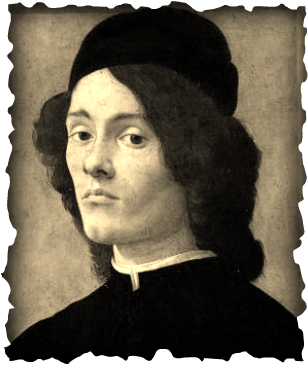
Sandro Botticelli was born around 1445. He became a famous artist in Florence, and was known for his technic of painting on wet plaster with water color paint, also known as fresco. Botticelli even painted three frescoes for the pope in Sistine Chapel in 1481. His work also included scenes of classical mythology. His images were more realistic than other artists because he focused on the emotion of the scene rather than trying to be accurate.
Raphael Sanzio
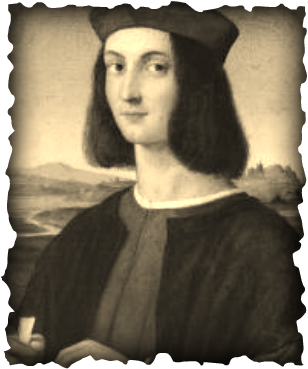
Raphael Sanzio worked at the same time as Leonardo da Vinci, but was younger than him. Even as a young man, Raphael worked with grace and ease. He became known as one of Italy's best painters. Italians loved the gentle Madonnas he painted. Also, he painted many frescoes in Vatican Palace. His best-known painting is the School of Athens, depicting a bunch of Greek philosophers.
Michelangelo Buonarroti
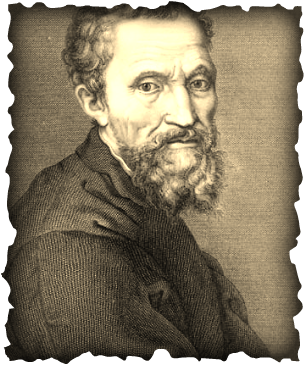
Michelangelo Buonarroti was a painter, sculptor, and designed buildings. One of his best-known Renaissance works is The Ceiling of the Sistine Chapel in Rome. Although he painted many works, he was a sculptor at heart. He believed his talents were inspired by God, so he carved his statues to show perfect versions of human beings as a symbol of God's beauty and perfection. Michelangelo is best-known for his 13-foot-tall statue David. He made David seem calm, yet ready for action. Another impressive statue of Michelangelo is the statue Moses that was finished around 1515. The figure appears both wise and powerful.
Titian Vecelli
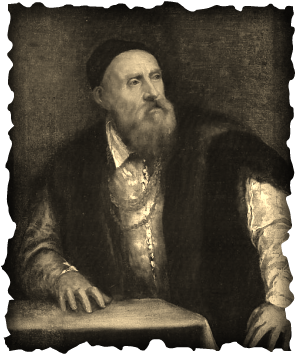
Titian Vecelli was a painter from Florence that died in 1576. Titan had gained the title of count, many riches, and received many honors for his works before he died. Titian painted many portraits, as well as mythological and religious scenes. Additionally, he painted scenes that came from his imagination. Titan used rich colors that contrasted with extremely dark shadows, which influenced artists later.
Jan Van Eyck
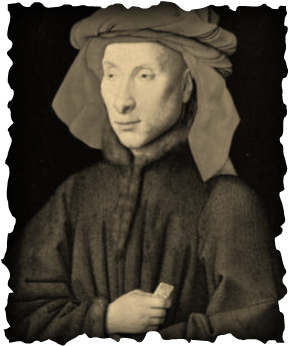
Jan Van Eyck was a famous Flemish oil painter; some people even credit him for creating the method of oil painting. Van Eyck learned how to mix and blend oil paints to create more brilliant colors. Some even thought that the colors in his work sparkled like jewels of stained glass. One of his best-known paintings is of a newly married couple standing side by side in a formal bedroom. Van Eyck showed much detail of the rich gowns and the chandelier above their heads. The painting is visually appealing because of balance in color and space between the couple and the objects in the room. Also, the figures in the paintings look much more realistic.
Albrecht Durer
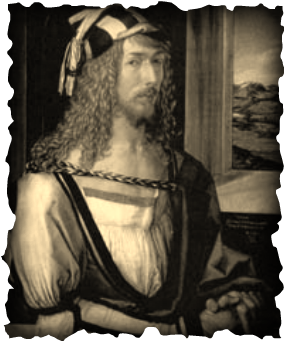
Albrecht Durer of Germany was a master of perspective and fine detail. He considered a master painter but is best known for his engravings. He printed many copies of his carvings. He then sold them throughout Germany gaining wealth. Four Horsemen of the Apocalypse is an example of a woodcut. The image draws on a passage from the Bible, which Durer interpreted and drew upon his creative abilities to create a strong visual image. The woodcut shows four horsemen riding to announce the end of the world.
Pieter Brueghel
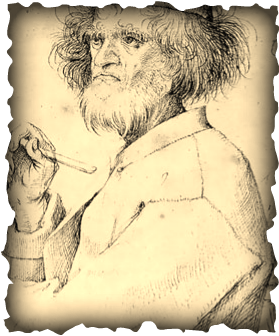
Pieter Brughel the Elder was born in Flanders in about 1530. Brueghel is best known for his painting of peasants, such as The Peasant Dance, showing a fine example for the Renaissance art of Northern Europe. The subject is village celebration. His painting portrays peasants as real people; some were fat, some have big noses, and some have missing teeth. Brueghel relied on colorful and vivid detail and realism. Brughel painted people the way they really were. He showed their flaws and strengths. The honesty makes his paintings sparkle with life and emotion.
Filippo Brunelleschi
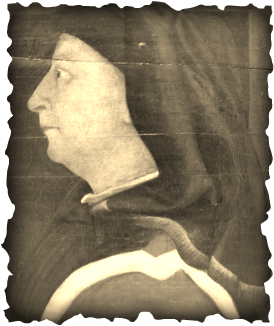
Filippo Brunelleschi built a Roman-style dome on top of the Florence Cathedral. He had a good grasp of mathematics and was the first artist to know linear perspective. Linear perspective gave flat surfaces the feeling of space and depth.
Perspective
Renaissance painters also used new techniques. The most innovative was perspective. Perspective is a method that makes a drawing or painting look three dimensional. Artists had tried to use perspective before, but Renaissance artists perfected it. Using perspective, objects in a scene appear to be at different distances from the viewer. Filippo Brunelleschi was the first artist to know perspective. Linear perspective is a system that gives a flat surface the feeling of space and depth.
Chiaroscuro
To make paintings more realistic, Renaissance artist also used a technique called chiaroscuro. Chiaroscuro softened edges by using light and shadows instead of stiff outlines to separate objects. In Italian, chiaro means “clear or light,” and oscuro means “dark.” Chiaroscuro created more drama and emotion in a painting.
Fresco
The famous artist Botticelli sometimes painted on wet plaster with watercolor paint. A painting done in this way is called a fresco, which means "fresh" in Italian. Frescoes were painted in churches all over Italy, and in 1481, Botticelli printed three frescoes for the pope in Sistine Chapel.
Oil Paint
Oil Paint – One important method they developed was oil painting. Oil painting was developed in Flanders. Oils let artists paint intricate details and surface textures, like the gold braid on a gown. Jan Van Eyck was a master at oil painting. People credit him with having created this method of painting.
Engraving
Albrecht Durer is best known for his engravings. An engraving is made from an image carved on metal, wood, or stone. Ink is applied to the surface, and then the image is printed on paper.
